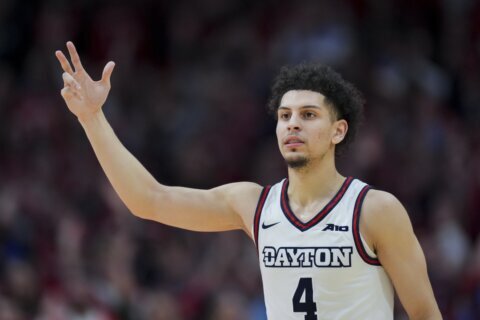The reason all your co-workers are taking long lunches or calling out “sick” this Thursday and Friday is the thrill of March Madness and the energy and excitement generated by small schools trying to play the role of David versus the Goliath of big state universities.
A team with a double-digit seeding that wins a game, or even two, is dubbed “Cinderella,” and it can be fun to get behind them as they try to pull off an incredible and improbable run to a championship. But if you’re trying to win the pool among your friends or co-workers, listen more to your head than your heart. Midnight usually strikes earlier than anyone wants to see.
“Data is critical,” said Sheldon Jacobson, a computer science professor at the University of Illinois. He also runs Bracket Odds, a STEAM (science, technology, engineering, art and math) learning lab that’s devoted to March Madness and the challenge of “bracketology,” as it’s known.
It’s worth picking a couple of upsets, he said, but the smarter picks will involve teams seeded 10 to 12 winning as opposed to the 14 or 15 seeds (or, aside from UMBC, the 16 seeds).
“People think, ‘Oh, we’re going to have all these upsets in the first round,’ but history does not bear that out,” said Jacobson.
“You don’t want to over-insert upsets in the first round. In fact, what we recommend people to do is put together your Final Four or Elite Eight first and then work backward and forward from that, and then what you’ll discover is you’ll end up with a bracket that makes more sense.”
However, this year there are more of what are considered mid-major schools seeded higher than before. You have teams like St. Mary’s of California as a 5 seed, Colorado State as a 6 seed and Murray State as a 7 seed. And even point spreads involving some of the 6/11 and 3/14 games are closer than you’d expect. This year, several of those teams have more experience with players taking advantage of the extra year of eligibility offered because of the pandemic.
“That maturity especially among mid-majors is absolutely critical and a good predictor of what could happen on the court,” said Jacobson. “If you have that, it gives you an advantage.”
In addition, transfer restrictions have been loosened, and now players can move to a different school in search of more playing time without having to sit out a year.
“This makes them dangerous,” Jacobson said of the mid-majors who brought players in looking for more playing time than they were getting elsewhere.
“We’re going to see some surprises,” he said. “But at the end of the day, when we get to the Final Four and the national championship game, you’re going to continue to see those top seeds — the 1s, the 2s, the 3s and possibly the 4s — playing in those games. That’s what historically has always happened, and I don’t see any change in that this year.”
(EDITOR’S NOTE: This story has been updated to reflect the correct spelling of Jacobson’s last name.)








